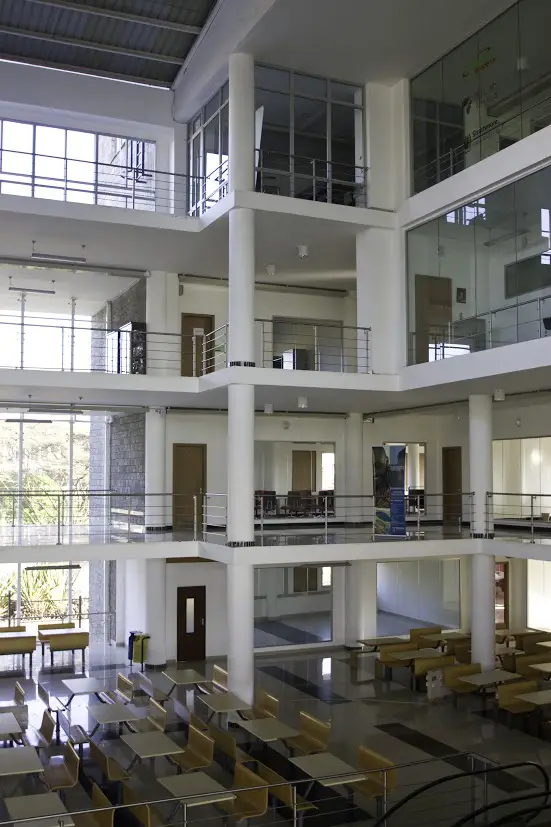Selecting the right machine for the particular track conditions and circumstances has become quite a science due to the very large variety of machines and their various features.
Tamping machines can be classified as either plain track tamping machines or universal tamping machines specialised for tamping of track in turnouts, crossings, around splice joints, checked rail sections and other restricted track in addition to plain track. The following are some of the features that must be considered when a machine is specified in a tender:
1. Lifting and Aligning Unit
Tamping machines are equipped with a combined lifting and aligning unit mounted in front of the tamping units between the bogies.
Plain track tamping machines are equipped with double roller clamps to grip the rail under the crown and two flanged rollers which run on the rail crown to transfer the lateral force to the track for alignment.
Universal tamping machines lifting and aligning units have additional special features such as lifting hooks which grips the rail under the crown or base for lifting in restricted track such as turnouts, checked rails, splice joints, etc.
2. Measuring System
A fully automatic measuring system determines the relative difference in the vertical and horizontal positions of the track at a centre measuring trolley between two reference points, the front and rear measuring trolleys.
The measuring system works together with the lifting and aligning unit to lift the track to a uniform height removing any vertical defects in the process and to simultaneously slew the track to correct any horizontal defects in the track leaving a uniform level track behind.
Tamping machines of high quality use optical or laser equipment mounted to a mobile trolley which is moved 100 to 150 metres ahead of the tamping machine, depending on geography and other conditions. This effectively lengthens the chord length to the distance between the rear measuring trolley of the machine and the position of the mobile trolley which provides utmost accuracy in the vertical and horizontal track level.
The measuring system can be supplemented with a computer-based system (such as the WIN-ALC) which can be used to measure the track and for automatic calculations and/or setting of the offsets in curves.
3. Third-Rail Lifting Device
Modern universal tamping machines are fitted with a hydraulically operated, telescopic third-rail lifting system on either side of the machine which is synchronised with the lifting and aligning unit. The additional synchronised lift on the outside rail of the turnout distributes the weight of the sleeper and rails across three lifting points which is essential to tamp turnouts effectively.
4. Tamping Units
Tamping units can be identified by:
· Number of Sleepers Tamped per Cycle – Tamping machines can be fitted with tamping units to tamp from one to four sleepers per cycle. High production tamping machines are extremely cost effective when their capacity is optimised.
· Specialised Turnout Tamping Units – Problems associated with tamping restricted track such as turnouts is addressed by the use of split units which are principally divided in two (field side and gauge side). Each one of the total of four units can be lowered and put into action separately from the other. The units can also be displaced laterally on horizontal guide columns so that the tamping tools are centred exactly over the area to be tamped.
5. Auxiliary Satellite Frame for Continuous Action Tamping
A conventional tamping machine must accelerate and brake between tamping insertions. To increase tamping production rates the tamping units can be mounted to an auxiliary satellite frame which runs on its own axle/s separate from the main frame. This allows continuous motion of the main frame while the cyclic braking and acceleration for the tamping action is performed by the much lighter auxiliary frame.
6. Wheelbase
Wheelbase refers to the distance between the centres of the bogies. During the tamping process, the track is lifted at the lifting unit by at least 20 mm to ensure a residual lift. Where a vertical alignment defect is encountered, the lift becomes progressively more by the depth of the defect.
When the lifting units lift the rail between the wheels the induced stresses in the rail due to the radius of the bend will increase with an increase in lifting height and decrease in wheelbase. Research has shown that tamping machines with a 6 metre wheelbase cannot lift more than approximately 40 mm before the maximum rail stress is exceeded. Considering that the minimum maintenance lift by a tamping machine is already around 20 mm, a 6 metre wheelbase machine will not be able to even lift out a vertical alignment defect exceeding 20 mm in one pass without over stressing the rail and creating a potential future rail break.

